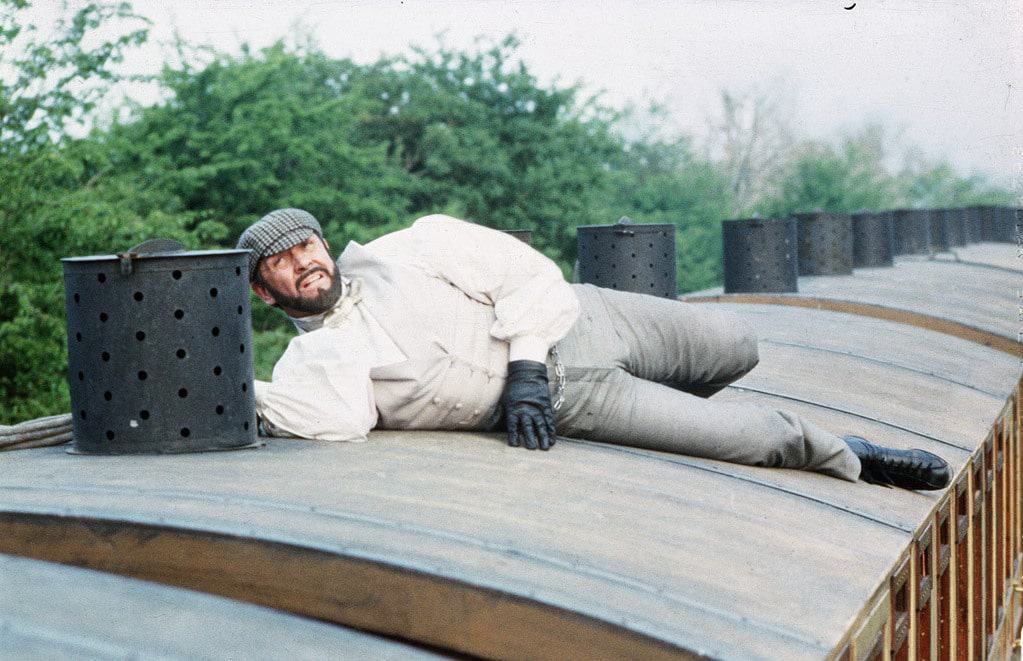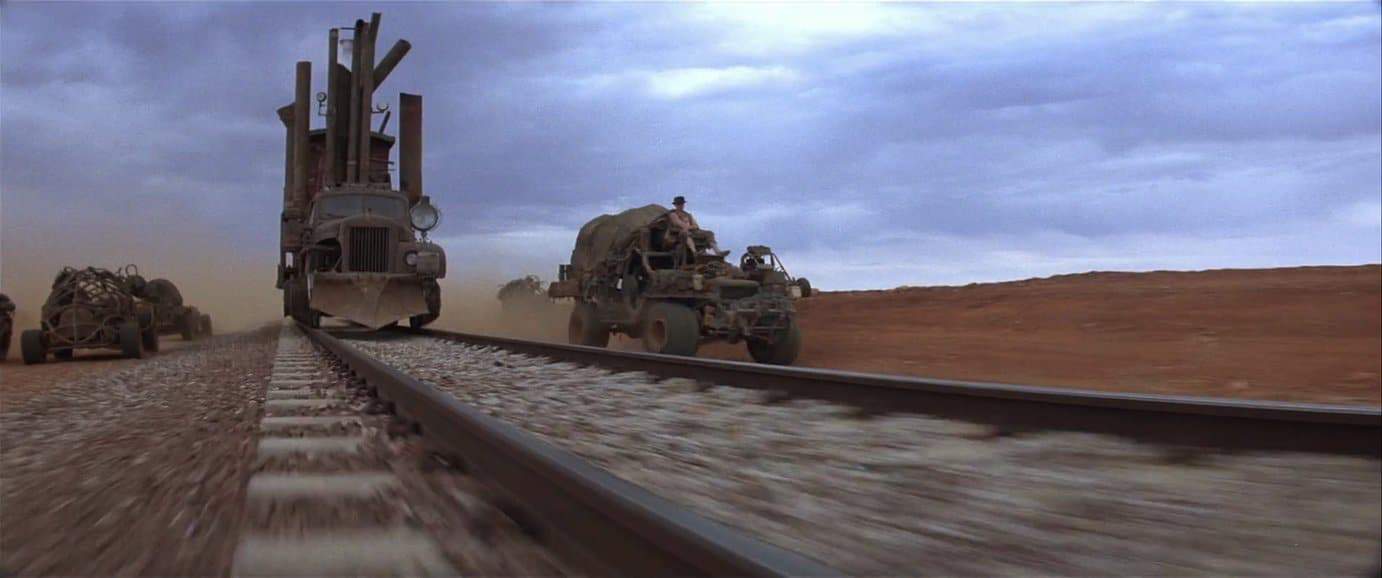We recommend movies to check out after the conclusion of the ‘Maze Runner’ trilogy.
The third installment of the Maze Runner franchise has finally arrived, and like the first movie, The Death Cure is a hodgepodge influenced by a variety of earlier films. The concluding chapter isn’t as inventive with its mashup as the original, however, and so its lineage seems more generic — fellow post-apocalyptic series finales like The Hunger Games: Mockingjay -Part 2 are most heavily evoked, even if by supposed coincidence. I’ve tried to be less obvious with my recommendations of what to see next (or instead), so neither that nor any Resident Evil or Divergent films are listed below.
![]()
The Great Train Robbery (1978)

The rescue mission that kicks off The Death Cure is pretty familiar stuff, with a train ambush that recalls a ton of robbery and hijacking sequences, particularly in Westerns. Certainly the best place to start with this sort of influence is the 1903 film The Great Train Robbery. But this much later movie, which isn’t a remake despite the title, has a more interesting relevance even if its big heist is conducted in a manner lacking in similarities to the one in the Maze Runner sequel.
Director Wes Ball often cited Jurassic Park as a favorite movie when interviewed for the first installment of his trilogy, and its influence is slightly apparent in the movie. The second part, The Scorch Trials, in turn has a plot that partly calls to mind the 1978 film Coma, which was scripted and directed by “Jurassic Park” author Michael Crichton. Now The Death Cure begins with big train set piece, and so I have to continue the line and acknowledge this movie helmed by Crichton and adapted from his novel of the same name.
![]()
Night of the Comet (1984)

I never did a list of movies to watch after The Scorch Trials, but in addition to Coma I would have included this favorite post-apocalyptic movie. Like in the Maze Runner movies, the Earth is devastated by a catastrophic cosmic event — there it’s solar flares, here obviously a comet — that wipes out much of humanity. Then a plague caused most of the remaining people to become zombies, but some survivors still remain and we follow them as they just try to carry on. However, there are also evil scientists who want to harvest the bodies of healthy survivors in their pursuit of a cure.
Night of the Comet is not a great movie, either, but like the Maze Runner trilogy it works especially well because of its winning cast. Here it’s really just two very appealing actresses, Catherine Mary Stewart and Kelli Maroney, who play extremely dissimilar sisters, each having coincidentally avoided being turned to dust by the comet by spending the time behind steel walls. In fact, the movie loses some of its charm when other characters are eventually introduced and we’re no longer just following the mismatched pair of tough girl Reggie and cheerleader chick Sam.
![]()
Mad Max Beyond Thunderdome (1985)

With The Scorch Trials, the Maze Runner series turned more into your basic wasteland-set post-apocalypse narrative, and author of the books, James Dasher, has admitted the obvious influence of the Mad Max movies on the works. Since both their publication and the start of the movie adaptations, George Miller’s definitive franchise has returned with what should be a new standard for the genre and action movies in general. It’s hard to appreciate something like The Death Cure, as well-directed as it sometimes is, in the wake of Mad Max: Fury Road.
This third Mad Max movie is a little more its speed, and upon its release was hard to appreciate following the prior sequel, The Road Warrior. Even with its sillier, messier plot compared to the rest of its franchise, Beyond Thunderdome is still better than The Death Cure, most evident in comparison of their train chase/hijackings. The difference in the sequences is that it’s the bad guys in Beyond Thunderdome trying to take over the locomotive of the future. Interestingly enough, a few years after this Miller made a movie about a search for a cure for a deadly disease: Lorenzo’s Oil.
![]()
Swordfish (2001)

If you can enjoy The Death Cure despite its script problems, maybe you’ll be able to enjoy this techno thriller that critics trashed for its illogical plot but that still has a lot of fans due to its slick action. I was reminded of one of its more notable action sequences during a scene in the new Maze Runner movie where a bus full of people is being swung over a city by a crane. In Swordfish, a bus full of people is being carried over Los Angeles by a helicopter, and while at first the vehicle is horizontally level it eventually winds up, like the bus in The Death Cure, at a 90-degree vertical.
I doubt the stunt’s practical achievement in The Death Cure, but for Swordfish they really did have a helicopter carry a bus over the city. I actually learned of this while watching Thom Andersen’s Los Angeles Plays Itself (which I recommend above anything on this list) way before ever seeing this movie. The essay film features clips of the bus stunt from The Making of Swordfish to illustrate that sometimes the production of a movie can be a greater spectacle than the movie itself.
![]()
The Station Agent (2003)

Given how much I like the cast of The Death Cure, I would have been fine just listing recommendations of actors’ previous movies. But most of them tend to just be great in bad movies (Kaya Scodelario is the only reason to see Pirates of the Caribbean: Dead Men Tell No Tales) or I already recommended the best picks in my list for the first Maze Runner (such as Scodelario in Wuthering Heights), even for actors who are new to the franchise with the third movie (Walton Goggins is in Predators, which I highlighted then for other reasons), or (like Goggins) they’re really best known for TV series.
The Maze Runner franchise has three actors — Aidan Gillen, Thomas Brodie-Sangster, and Nathalie Emmanuel — from one of our favorite series: Game of Thrones. And they all share the movies, including the latest, with Patricia Clarkson. That’s why I’m taking this as an opportunity to recommend The Station Agent, in which she stars alongside GOT‘s Peter Dinklage in his breakthrough role. The two, along with Bobby Cannavale, play unlikely friends who come together in spite of Dinklage’s character’s desire to be alone.
![]()
Land of the Dead (2005)

The Death Cure brings the Maze Runner trilogy and its heroes to “the Last City,” a metropolis fortified by giant wall that keeps the wealthy and powerful in, and the riffraff out. The political, military, and scientific employees of W.C.K.D. are among those based there, and the zombie-like Cranks are among those kept from entering. The feudalistic nature of this setting seems Medieval right down to the plague, but it also made me think of George A. Romero’s fourth Living Dead film.
Much more of a zombie movie than The Death Cure, there’s also more of a political theme to Land of the Dead. Part of Pittsburgh has been isolated by rivers and an electric fence, with the area inside and particularly a high-rise apartment building reserved for the rich and powerful, under the rule of one man played by Dennis Hopper. However, similar to the city dwellers in The Death Cure, it’s not just the undead they have to worry about and their downfall partly comes at the hands of disgruntled poor who are denied the sort of sanctuary the rich have. But while the Cranks are pretty much absent during the climax of The Death Cure, the zombies do overrun the city of this movie, metaphorically representing a peasant uprising.
![]()
Toy Story 3 (2010)

And we’re back to talking about the opening action sequence of The Death Cure, because it’s the part I most remember given that it got the movie off to a thrilling start before waning in excitement. As I’ve already addressed, the set piece is reminiscent of a number of Westerns containing train robberies or rescue missions. But it also involves cars (reminding me of an early action sequence in Fast Five), a bunch of kids on the train who are in danger, and a futuristic jet. If it also had a dinosaur, I’d have said it was an homage to the opening of Toy Story 3 more than anything else.
Other than that, the Pixar sequel doesn’t relate to the Maze Runner series’ own part three. If anything, its prison-like setting where a seemingly friendly character turns out to be the villain is more comparable to the first act of The Scorch Trial where the Gladers are taken to a W.C.K.D. facility in the pretense that it’s a safe place protecting them from the evil organization. Yes, I’m saying that Aidan Gillen is basically playing a human Lots-O’-Huggin’ Bear.
![]()
How to Survive a Plague (2012)

I’ve already referenced Lorenzo’s Oil as one true story about the search for a cure for a deadly disease, and now here’s one worth spotlighting on its own. For this week’s documentary pick, I recommend David France’s Oscar-nominated chronicle of the efforts towards getting at least treatment if not a cure for HIV and AIDS. Editing archival footage in a way that makes it experiential — the history is shown as much as it’s told — we follow the activism of organizations ACT UP and TAG through the mid ’90s when pharmaceutical cocktails arrived on the market and kept a majority of patients alive.
As the catchy title suggests, How to Survive a Plague also takes an approach inspired by science fiction disaster movies such as zombie films and stuff like Contagion in its tracking of, through titles on screen, how many people have died each year of the story. Years ago, France told me, “The comparison to Contagion is interesting, because they are both medical thrillers in a way. And in both instances you are invested in them as they’re trying to figure out innovative ways to make survival, which seemed so impossible, a possibility.” The same is true, in a way, of The Death Cure.
The article Watch ‘Maze Runner: The Death Cure,’ Then Watch These Movies appeared first on Film School Rejects.
0 comments:
Post a Comment